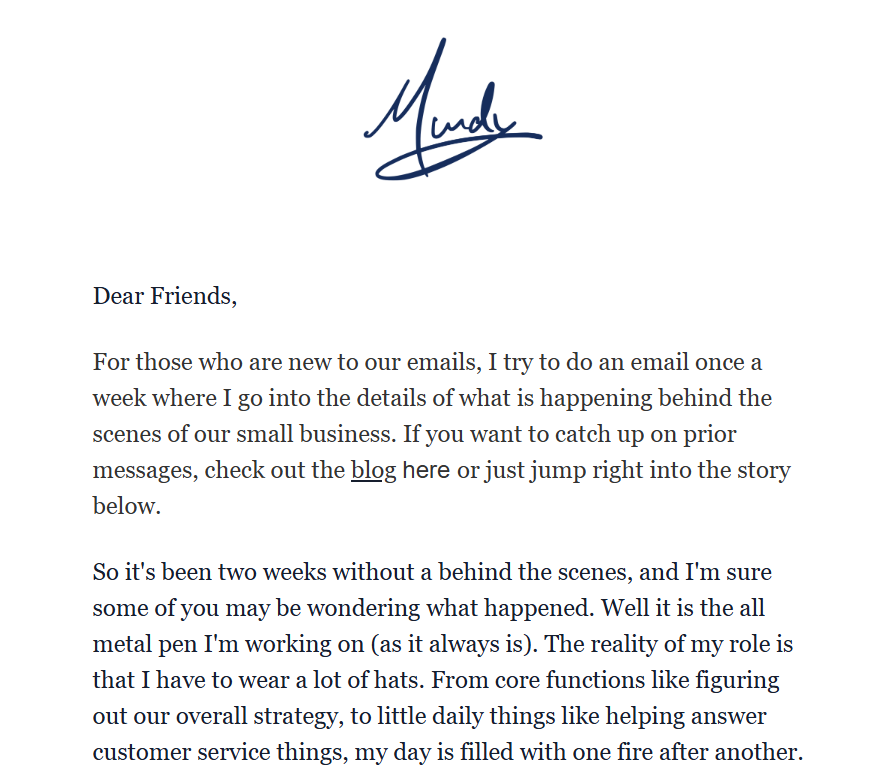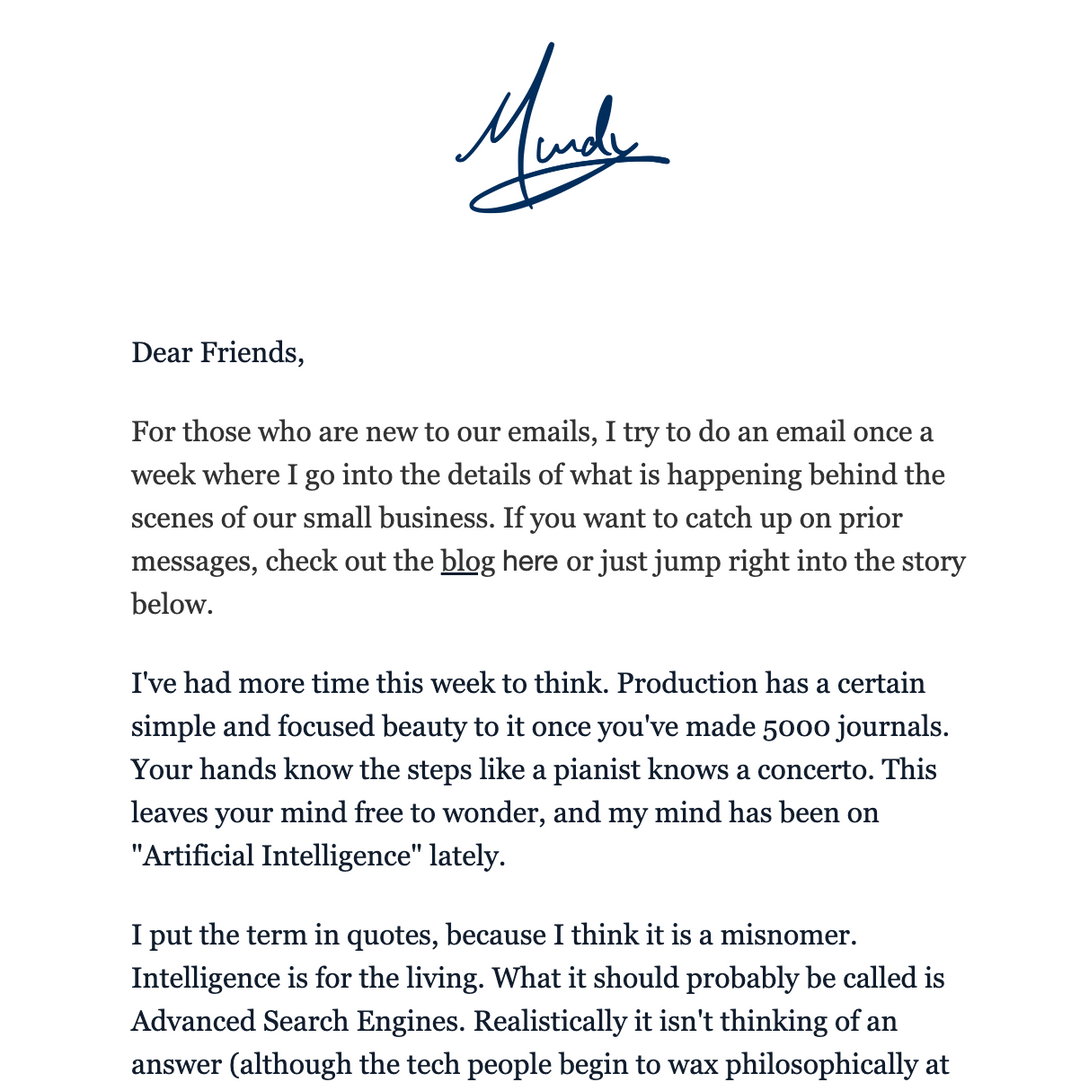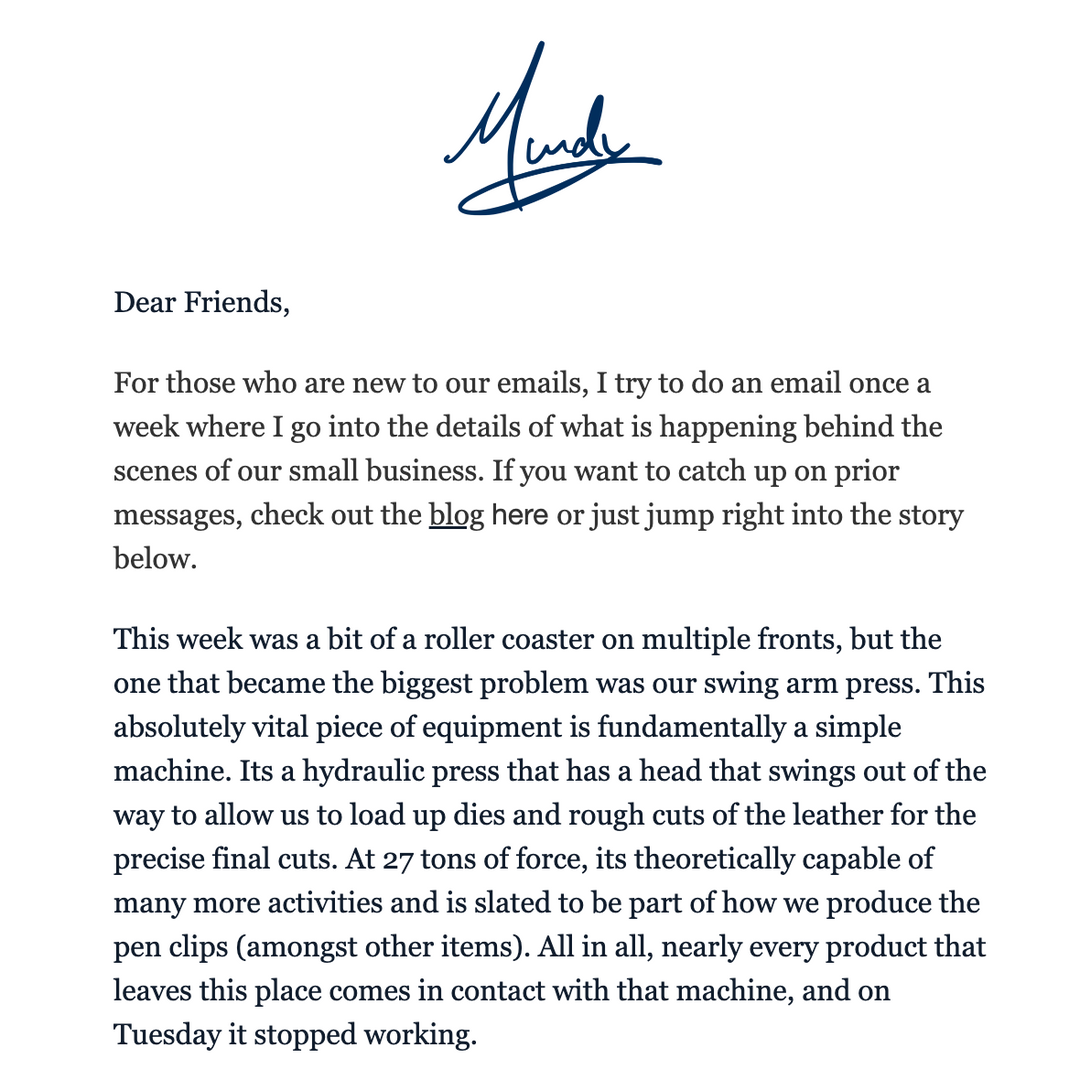Behind the Scenes - 8/16/24

Dear Friends,
I am basically back at the office now. Things are settling in nicely at home and the ship needs her captain here. My excellent team has been doing a great job, but we have strong wings fighting against us at the present so it's time for some strategic shifts. Thus I return to my position at the helm.
First there is a round of financial musical chairs. I cannot speak to everyone, but I imagine our circumstances here are not unlike other small businesses. The basic way it works is this. There are three types of debt structures (technically two, but I'll dive into that more in a bit).
One is things like personal and business credit cards. They have their credit limits, their 30 days interest free, their pay as you can (with minimums) repayment plan, and so on. Many of you know this reality well. You also know that the interest payments on these cards usually exceed 22%, and holding a balance of more than 30% of your total available credit line lowers your credit score.
Two is things like Shopify Capital, Paypal Capital, or a hundred other companies that do the same thing. They connect to your Shopify store (or other provider) and the deal is simple. You borrow the amount you want, there is a "fee" for borrowing that money that is a flat amount (usually 8-13%), and your repayment is a percentage of your daily sales, take out of your account by direct deposit withdrawal the day the money from those sales clears into your bank. In reality the repayment percentage usually calculates out so that if you did the same sales from the last 6 months for the next 6 months, you would pay it off in 6 months (or sooner if you have a significant growth spurt).
This one is tricky, because it's challenging to properly calculate the "interest" in terms of APY (which I'm sure is on purpose). So you can't really compare it to traditional interest based debt 1:1. If your sales slow down after the loan goes through, your repayment slows (you are forced to repay it back within 12 or 18 months at a minimum). The repayment slowing means that if it takes you 12 months to repay the loan then you only had an effective interest rate of 8% (the fee). However if your sales double over the next 6 months you end up paying back that loan in 3 months, which means that your effective 12 month interest rate would have been 24% (8% fee x 4). So it's a double edged sword, and I have mixed feelings about it. I think it's nice in that when times are bad, you're not getting kicked in the teeth, and if the money causes you to grow fast they benefit more as well. It has got us into a cycle of debt and repayment though that I want to break because for us the effective interest rate has been usually between 12-18% due to our seasonality.
Three is the old school bank Line of Credit (LOC). Technically speaking, this is the same as a credit card, but more favorable to the borrower. Usually the LOC is secured by some type of collateral (like equipment, buildings, etc.). It has a credit limit that you can borrow up to (by putting it into your regular checking account), and can be paid back at your own choosing (there are minimums, but they aren't that much usually). Carrying a balance on the line however does not affect my personal credit score. The rate is also usually more favorable where its a floating rate pegged at a certain percentage over the prime interest rate. For us it's about 9% APY. The interest is charged daily on the balance, so paying it off when you can helps reduce the interest payments.
There are other forms of debt, for example the purchase of a large piece of equipment may be financed with a company that partners with the equipment seller. That usually looks like a fixed payment over a set term with the equipment as the securing asset similar to a car purchase. For this discussion, that isn't really a factor since it's normally a one time thing.
We use BMO for our business banking and our LOC specifically because they allow up to $500,000 for an unsecured LOC. An unsecured line of credit is backed by a generic lien on the company, which means that if the company were to go bankrupt, the loan would likely be converted to a fixed payment loan with a fixed term that I would be personally on the hook for. Our line isn't anywhere near the $500,000 mark, but it's an important detail because of the way our business works.
We don't have very many assets that would be worth collateralizing. Our inventory is turned quickly so we don't have much of that to borrow against. Even if we did, the bank only values the raw materials at 40% of what we paid for them. We rent the building we operate in. Our equipment is usually depreciated off our books in the first year to limit our tax liability, so on paper the Murdy Creative Co. doesn't have much in the way of sellable assets that would be used to pay off the debt in a bankruptcy setting.
Now this doesn't tell the whole story. In a company collapse, bankruptcy reality we probably could recover $40,000 or more from the paid off equipment, desks, shelving, etc. and our remaining inventory would likely be able to be liquidated for enough at retail to cover the rest so in the end, the "unsecured" line is important. It means I don't need to put my house up as collateral.
Now with these three different types of debts also come with different barriers to entry. Credit card debt is very easy to come by and can range up to $40,000 for a company like us. Signing up for a card takes almost no time and is instantly available. This corresponds to the high cost of interest. The second type is as simple, but only once you have sales history. There is also rounds to this one. So you can borrow a big chunk of money, but you won't be able to borrow more until you pay down enough of the first debt. The LOC is the optimal way to run debt in a company, but it is the hardest to come by. The banks require taxes, financial statements, and they are very cautious in the amounts they will extend.
For us we have used a mixture of all three for many years now. Some of it was practical reasons. For example we use a Robinhood Gold card for as many purchases as we can because it has an unlimited 3% cash back on all purchases *(you can sign up for one HERE if you want) and cash back rewards from credit cards isn't considered income for tax purposes. For a company like mine that runs through a lot of purchases, those rewards add up fast. However its limited credit limit means that we are running it up and paying it off a lot and that requires attention and management.
We are currently in our 5th round of Shopify capital funding. We have gotten into a cycle I'm not particularly pleased with. It started back years ago when we took a $100,000 loan with a high daily repayment rate. Initially we took it to help during our transition into the new location and it was very important to getting us setup in the new place. But it led to a cycle where we are always needing to take more capital to keep up with our liquidity and we can't seem to break out of it.
The best thing we can do to break out of it is to extend our LOC with the bank. We haven't had an extension in years now though. There are multiple factors at play. Since it's unsecured, my personal credit score is evaluated in decision to extend it. During really difficult financial times, I have to max out my personal credit cards which tanks my score. So right when we need help the most, it's the least likely time to get it. Also last year was the first time in several years that we have posted any profit at all as a company. So before now, the bank looked at us as a bad bet. They need our taxes for 2023 to extend the line however. We filed an extension early in the year and I'm still waiting from the tax people to get our taxes back. It also takes weeks for the consideration, underwriting, and approval process. So it's not a thing we can just turn on at a moments notice.
So here we are looking at a round of musical chairs.
We need to get enough cash to keep the credit cards paid off enough to keep my personal credit score high. We need to have enough cash to pay any taxes from last year and we need that cash now so that it can be used to get our LOC extension across the finish line. So to do that we are once again looking at another round of Shopify Capital.
If the line extension comes through, I hope this can be the last time we need to use that option. We can then use the line to pay off any high interest debts, and it will all be consolidated under that one lower cost roof.
And this is partially what led to our Flash Sale earlier this week.
I really dislike doing entire product line sales. It is risky because we need to have extraordinarily high revenues to compensate for the significantly narrower margins. That is why we do so few of them throughout the year. They only work if they are exceptionally rare. I also think they have a tendency to reduce brand equity in the minds of the consumers (think Kohls).
But the last 30 days have been such that we needed the cash infusion.
Our new version of paid meta advertising was spending a much lower budget on "landing page views" as the goal rather than "sales" which is our usual method. Now normally our sales based targeting costs us about $1.40 per landing page view, but focusing on landing page views cost us about $0.40 per view. So for a smaller budget we were getting a lot more site traffic.
In the beginning that seemed to work well, with us still being profitable and our conversion rate staying where we needed it to be, but over the last 30 days we have seen a continual drop in performance and it became unsustainable. That demands a new strategy.
It makes sense when you think about it. The algorithm is trying to maximize the number of people who see the page because that's what you told it to do. Just because someone is willing to go look at your website however doesn't mean they are actually a potential customer for you. Interest in the product, while good, isn't the same as a purchase.
So this takes us back to an old strategy, and to cover it we need to review some math.
For us there is our daily fixed costs. This is everything from the rent to our website software. It also includes our labor costs. Many companies view labor as a variable cost, but when I hire people I know that they are counting on the full 40 hours a week and so even when things are slow I don't send people home, we just find other work for them to do. On top of that there is our marketing ad spend. This is technically variable as it can be adjusted but is usually a stable number for weeks at a time. If you add this together you have a number each day that we need to keep the lights on and the marketing running.
Then there are the variable costs. These are the raw materials that go into the actual product themselves. Leather, fasteners, pens, etc. all play into this. Technically time is also part of this, but let's ignore that for the moment. If we don't sell anything, we don't have any of these costs. In reality we do because we have to buy the materials ahead of time, but for the sake of the math let's put that aside.
So for an example with some made up numbers. If the fixed daily costs are $2000, and variable costs of material are 50% of the product, a company needs to sell at least $4000 before it begins to make profit. Let's say in this example $1000 of the fixed costs are marketing costs. That would mean the marketing would need to generate $4 for every $1 spent or a Return on Ad Spend (ROAS) of 4. However, if you doubled the marketing spend to $2000 a day, using the same math as above you would only need to make $6000 to break even. That changes the ROAS to 3.
So if all the other fixed costs remain stable, increasing the marketing spend theoretically increases the likelihood that your marketing will accomplish its goal since its a lot easier to achieve a lower ROAS than a higher one.
However a high daily ad spend is a big risk since it means you are burning through your liquid cash very quickly so a few bad days can have a significantly harder impact on your cash reserves. This also plays into the "learning" of the algorithm. The Meta algorithm needs 50 successes within a 7 day period to get out of its learning phase. That is where it tries a bunch of different placements and demographics, trying to find the best one. Usually during this time the ads are overall less effective since it isn't optimized.
So here we are. We used the Flash Sale to generate the cash we need to survive the learning phase of a much higher than previous ad spend, and to help get some of our other debts down to allow for an improvement of our Line of Credit. It's too early to tell if the new ads are working. My main worry is that they did all their learning during the flash sale, so now its optimized around a demographic that may be more price sensitive. I'll need to wait and see.
All this is made more expensive and difficult by the changing advertising landscape, and the high cost of ads due to the election year. The overall economic situation is also making people more skittish about their finances than ever. Its an ever evolving beast.
There's a lot more to say on the topic and we have a bunch of new ideas that are being pursued at the same time, but this email is already so long. Maybe I can cover them more in detail next week.
Stay tuned for more letters in the coming weeks and be sure to go subscribe to our YouTube channel. If you like and watch the videos it helps us get promoted more by the algorithm to people who may never have heard of us.
Ever your servant,
Colin MurdyCEO/Owner
Murdy Creative Co.
Cell: 414-434-9001
MurdyCreative.Co
Binders | Journals | Folios | Sleeves | Folders | Briefcases | Covers | Accessories






